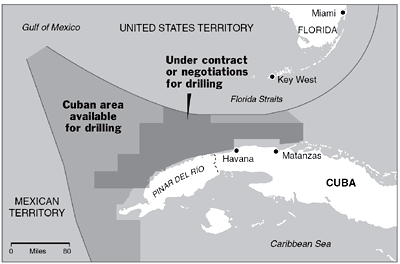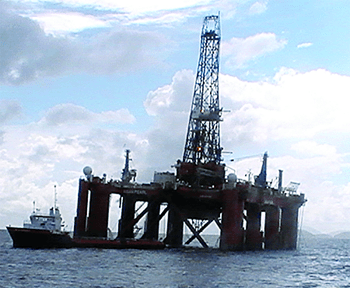 In our last Cuba update, we noted that their next deepwater well always seems to be a year away. So it came as no surprise when we saw this in a New York Times article:
In our last Cuba update, we noted that their next deepwater well always seems to be a year away. So it came as no surprise when we saw this in a New York Times article:
Yet next year, a Spanish company will begin drilling new wells 50 miles from the Florida Keys — in Cuba’s sovereign waters.
Comment: We have been hearing this for five years. Will the well really be spudded next year?
The nascent oil industry in Cuba is far less prepared to handle a major spill than even the American industry was at the time of the BP spill. Cuba has neither the submarine robots needed to fix deepwater rig equipment nor the platforms available to begin drilling relief wells on short notice.
Comments: (1) Not a good time for the US to be lecturing Cuba about oil spills. (2)In the event of a spill, all well intervention, relief well, and spill response equipment would no doubt be made available to Cuba without hesitation and with the full support of the US government. (3)A Cuban blowout is unlikely because every operator and contractor in the world will be focusing on well integrity and BOP performance issues that were factors in the Macondo blowout. (4)Informed international contacts have advised us that Cuban offshore officials are knowledgeable and committed to internationally accepted safety and pollution prevention standards.
My biggest concern with regard to Cuban offshore operations, assuming a moored rig is used, is that the rig would be set adrift during a hurricane and that anchors, mooring lines, or hulls could damage coral reefs and other sensitive seafloor features. In the US, the MMS and industry did a lot of good work on mooring risk assessments and improved anchoring systems and mooring lines. Given the significant probability that Cuban rigs will be exposed to hurricane conditions, it is imperative that US and Cuban specialists meet to discuss these issues. Once a rig is adrift, there is not much that can be done to stop it.
Also, in an award winning project, a multi-agency US government team demonstrated enhanced satellite monitoring capabilities that provide timely information on the location of evacuated rigs. These capabilities can be combined with gps systems to ensure continuous rig-tracking.
US-Cuban cooperation on offshore safety and pollution prevention issues is in the best interest of both countries, and should be encouraged without hesitation.
Read Full Post »





